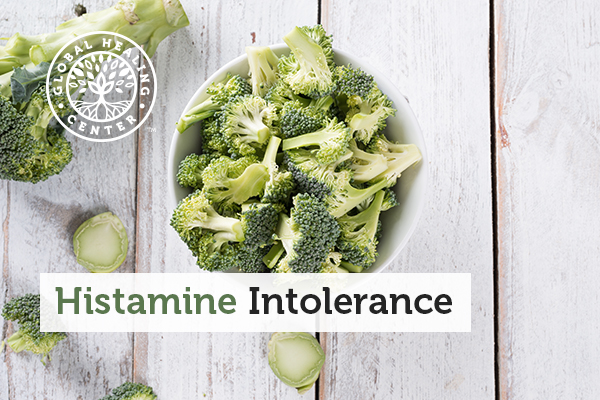Histamine intolerance is a condition in which your body cannot digest certain types of histamine found in many foods. When you have histamine intolerance, eating these foods can cause unpleasant symptoms. While the majority of people are able to digest histamines, for some individuals the ability to break them down is impaired. Histamines are natural chemicals that your body produces as part of its defence against infection.
They’re also present in many common foods, particularly those that come from fish and other aquatic creatures. If you have histamine intolerance, you may experience uncomfortable symptoms when you eat foods with high amounts of histamines. The good news is that with an appropriate diet and lifestyle modifications, the majority of people with histamine intolerance can manage their condition and enjoy a healthy life.
Once diagnosed with this condition, there are several ways to manage it and prevent its effects on your body.
What is Histamine Intolerance?
Histamine intolerance, also known as histamine intolerance or histamine excess, is a condition that occurs when an individual cannot break down and properly metabolize histamine found in certain foods. The severity and symptoms of histamine intolerance can vary from person to person. Histamine is a naturally occurring chemical in the body. It is produced by white blood cells as part of the immune system and is also found in some foods, particularly fish and fermented foods like wine and cheese.
Histamine is created and stored in the body in granules and is released whenever there is an inflammatory response in the body. It is meant to be a short-term response to an infection or injury. Histamine can cause unpleasant symptoms in individuals who have high levels of it in the body. These people are diagnosed with histamine intolerance. Most people can digest histamine, but for some, the ability to break down the chemical is impaired. When this happens, the body responds with a variety of symptoms that vary from person to person. These symptoms may include headaches, joint pain, nausea, and/or diarrhoea.
The Causes of Histamine Intolerance
There is no single medical condition that causes histamine intolerance. Rather, there are several reasons why some people are unable to process histamine properly.
Defective enzymes: In some patients, the enzyme responsible for breaking down histamine is absent or defective. This is the most common cause of histamine intolerance, but the cause is often unknown.
Inability to transport histamine: Another enzyme that transports histamine to the cells where it can be broken down is defective in some people. This can result in high levels of histamine that build up in the blood and cause symptoms.
Try an elimination diet: The most proven way to diagnose histamine intolerance is by performing an elimination diet. During this time, you avoid foods that are high in histamine. If you don’t experience any symptoms during this period, then you know that histamine intolerance is not your issue.
Foods that Cause Symptoms of Histamine Intolerance
As histamine is naturally occurring, almost all foods have some amount of it. However, certain types of foods are particularly high in histamine and should be avoided by those with histamine intolerance. These include: –
- Fermented foods – Fermented foods, such as sauerkraut, pickles, and vinegar, are particularly high in histamines.
- Fish – Fish and seafood contain high levels of histamine because they are aquatic creatures. Salmon and tuna are particularly high in histamine.
- Alcohol – Beer and wine contain high levels of histamine, but distilled liquor does not.
- Tomatoes – Tomatoes are a member of the nightshade family and contain high levels of histamine, as well as other chemicals that have been linked to various health conditions.
Other foods that are high in histamine include almonds, avocados, bananas, basil, celery, chilli peppers, citrus, coconut, eggs, parsley, strawberries, and walnuts.
Other Causes of Histamine Intolerance
There are other conditions that can cause a low tolerance to histamine. These are rarer than the causes discussed above but are worth mentioning as part of a complete diagnosis.
Metabolic disorder: A metabolic disorder, such as an overproduction of certain enzymes, can result in low tolerance to histamine.
Lactose intolerance, a condition that reduces the ability to digest the milk sugar lactose, can be confused with histamine intolerance.
Organism infection: An infection, such as a parasite, can cause high levels of histamine. This is referred to as a false positive and is uncommon.
Tips to Manage Your Symptoms and Live with Histamine Intolerance
There is no cure for histamine intolerance, but the symptoms can be managed with a few lifestyle changes.
- Avoid high-histamine foods: If you are diagnosed with high levels of histamine, eating foods rich in histamine can cause unpleasant symptoms. Eating a diet low in histamine can help to alleviate these symptoms for some people.
- Eat good-quality proteins: A balanced diet that includes good-quality proteins, such as fish and chicken, can help to lower your histamine levels.
- Consider supplements: Certain supplements can help to lower histamine levels in the body. These include vitamin C, zinc, and niacin. Probiotics also have a positive effect on histamine levels in the gut.
Conclusion
Histamine intolerance is not a life-threatening condition, but it can be a very unpleasant experience. Fortunately, the majority of people can manage their symptoms with an appropriate diet and lifestyle modifications. If you have been suffering from symptoms of headaches, joint pain, nausea, and/or diarrhea and have no idea what is causing them, you may have a disorder called histamine intolerance.
This is a very common condition, with an estimated 1 in 10 people suffering from it. The good news is that with an appropriate diet and lifestyle modifications, you can manage your symptoms and live a normal life. Once diagnosed with this condition, there are several ways to manage it and prevent its effects on your body.
READ MORE: The Top 9 MLS Listing Websites in America You Will Regret Not Knowing In 2022
